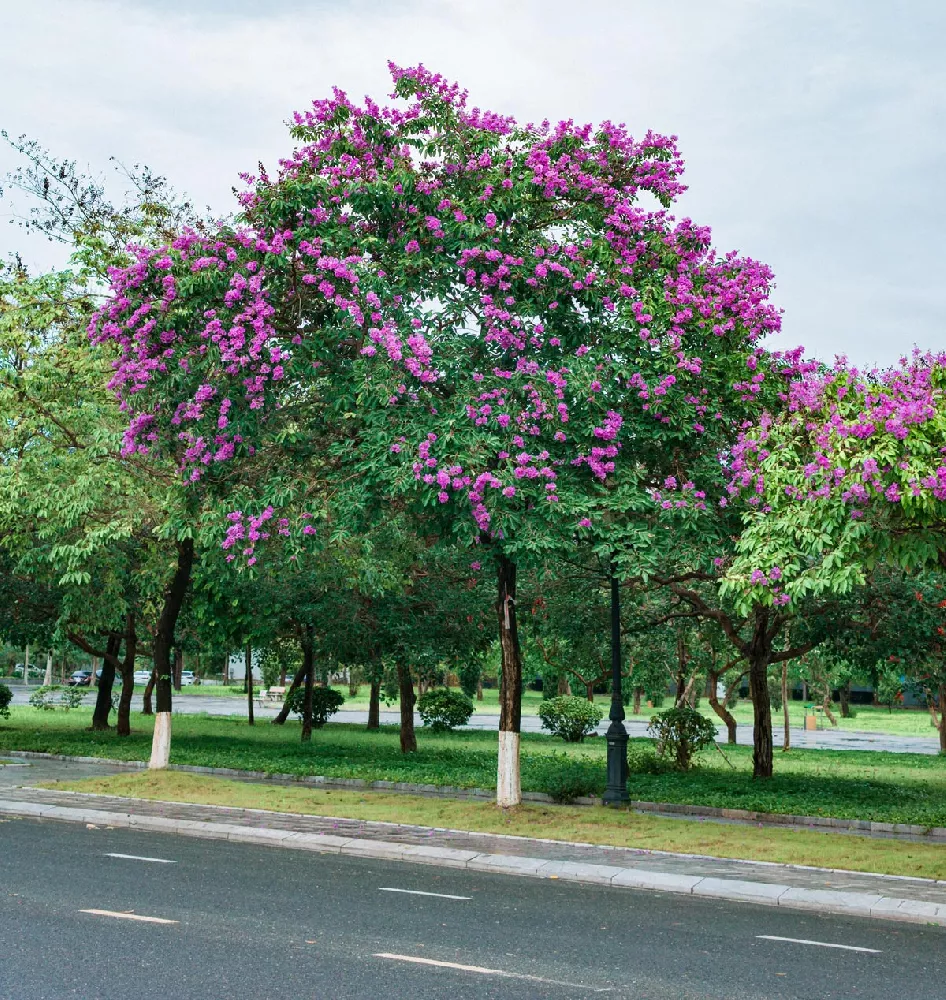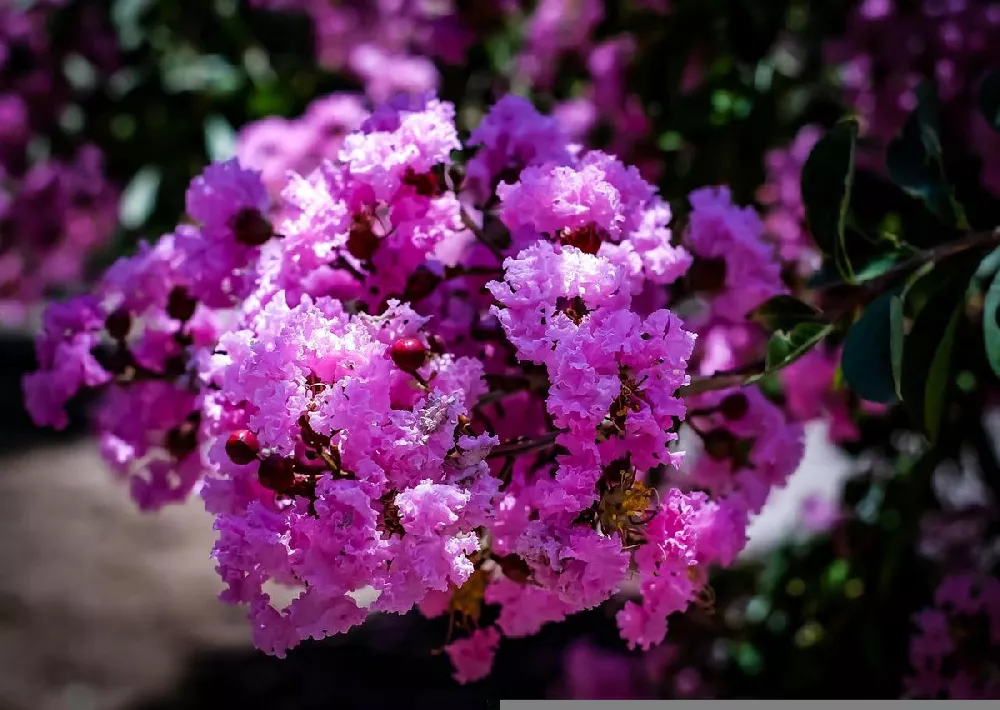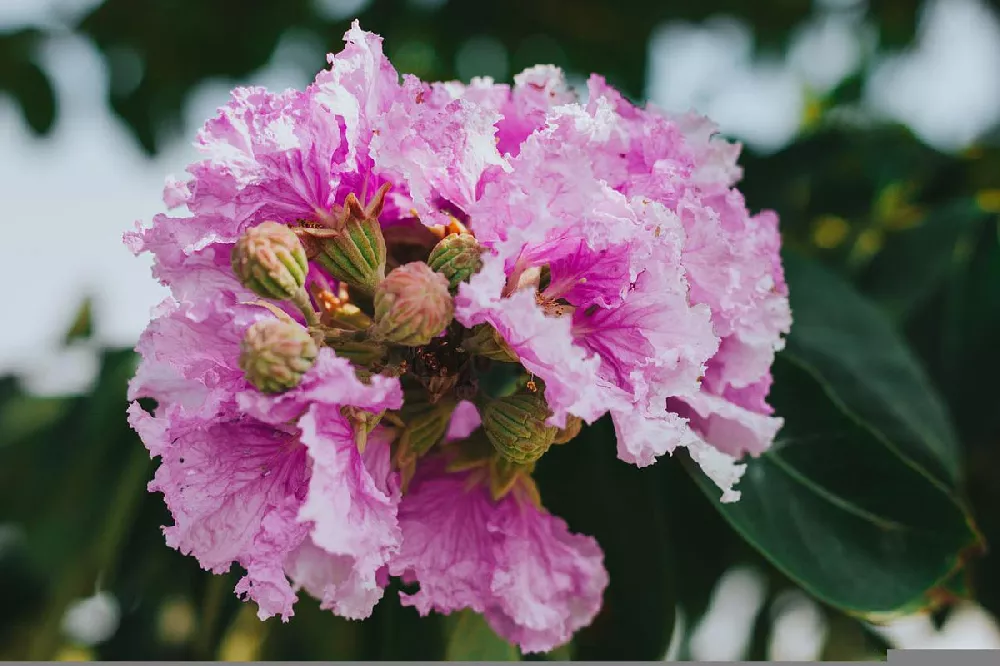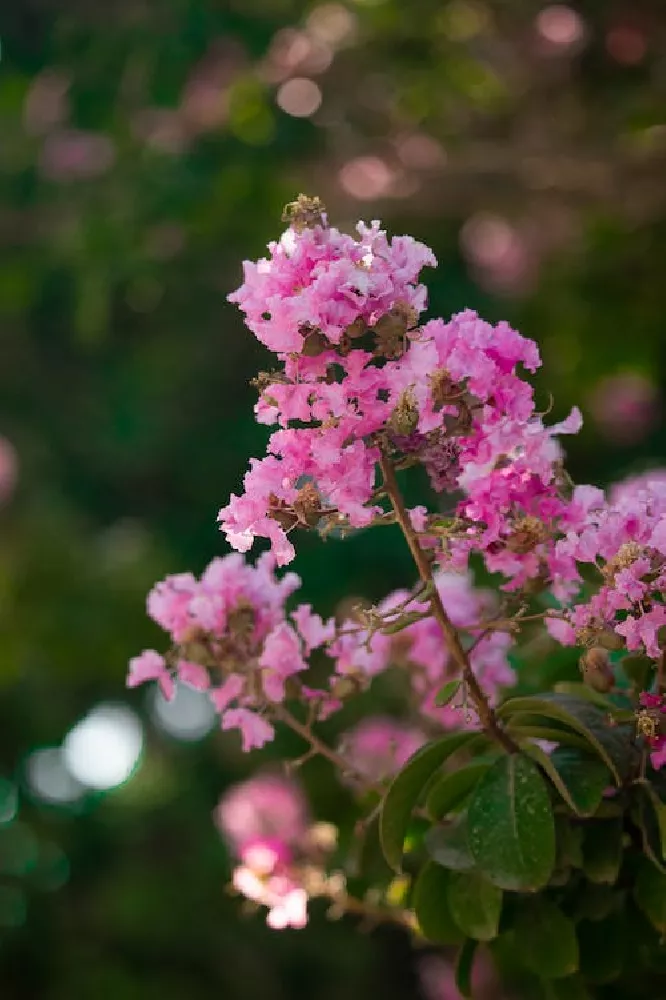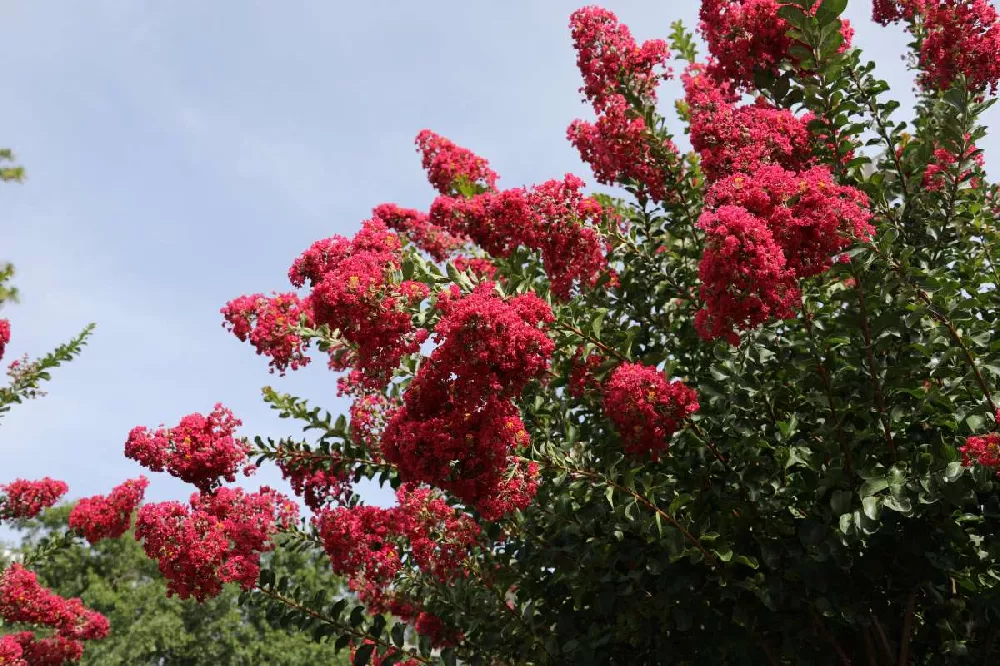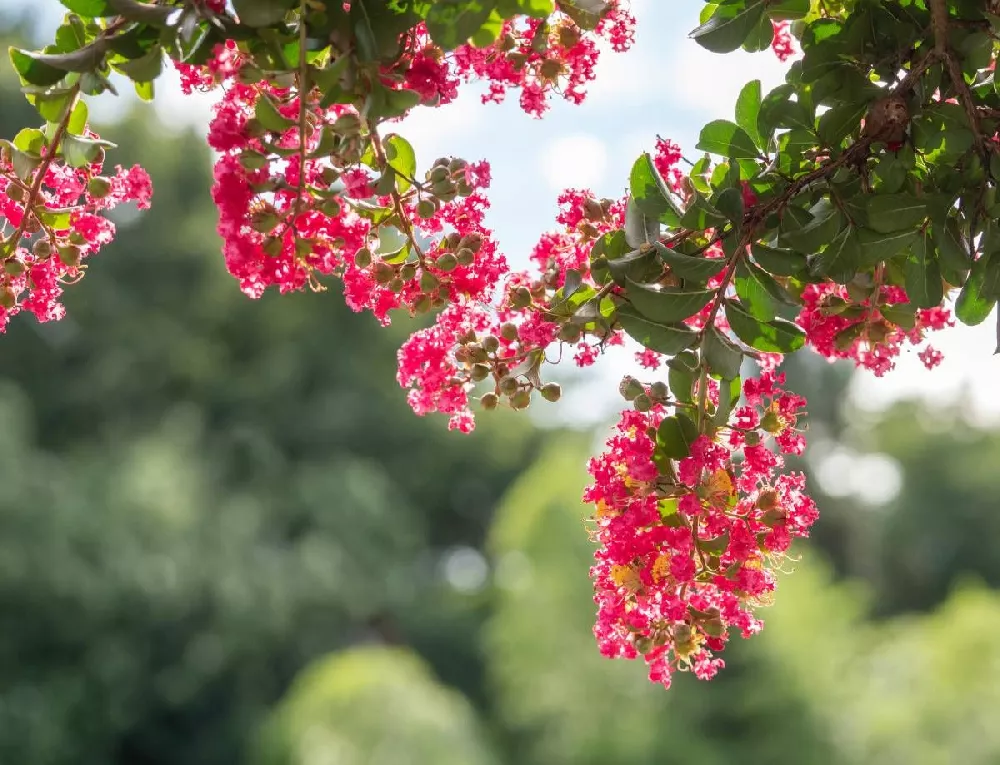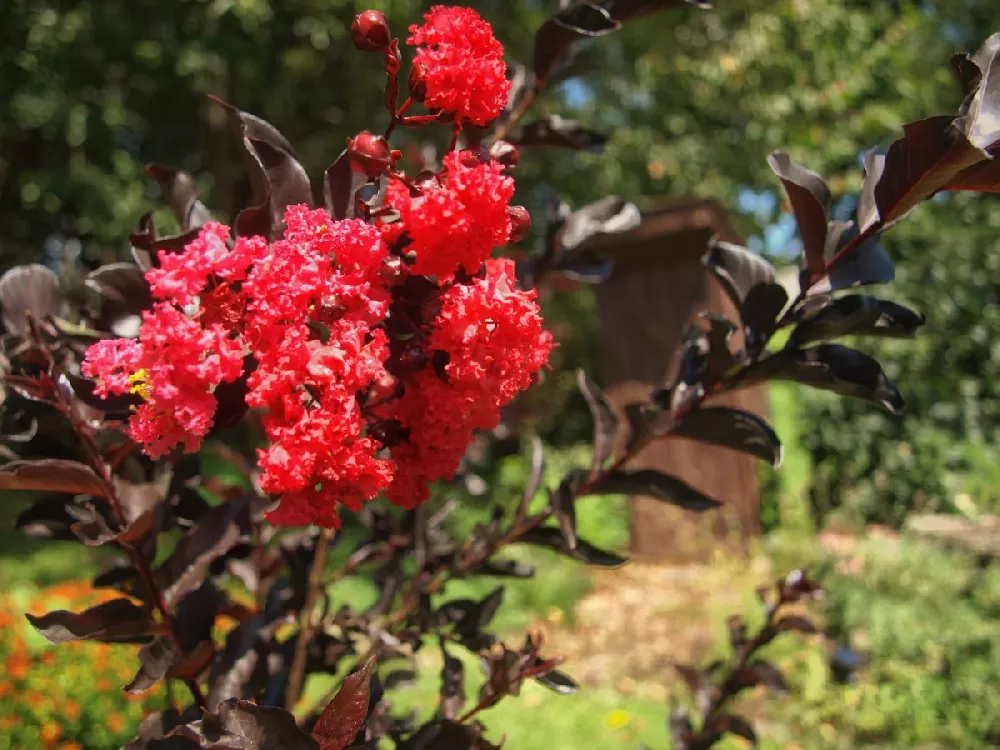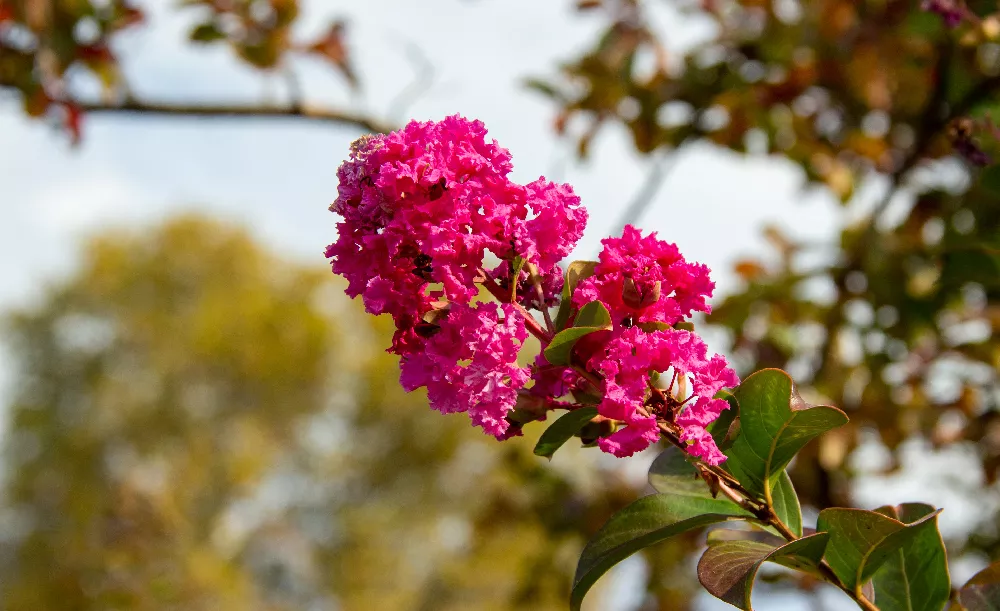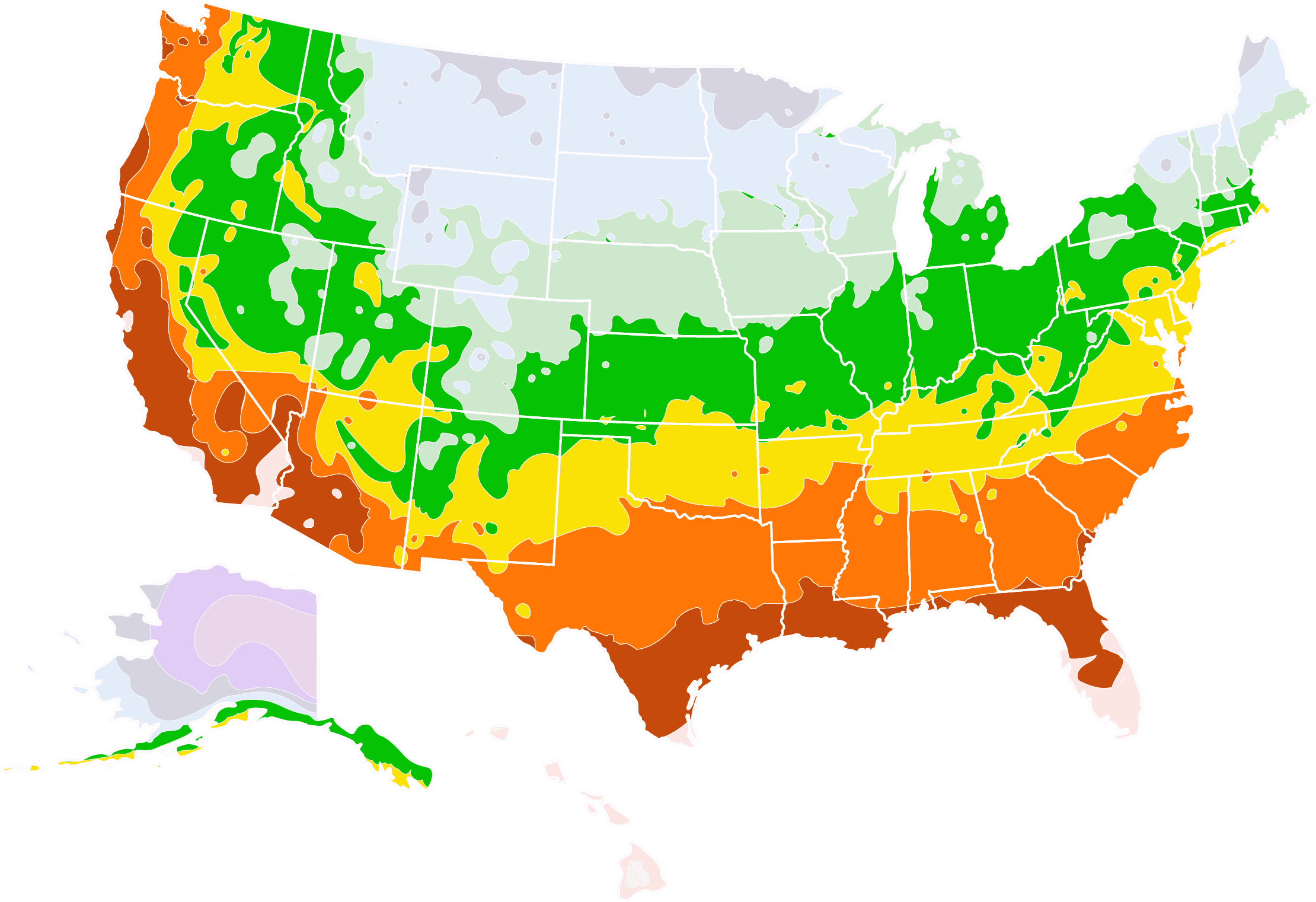Muskogee Crape Myrtle for Sale - Buying & Growing Guide
- Ships in 1-2 days
- 1-Year Warranty Eligible
- Pots or accessories are not included unless specified in the product options.
Shipping Details:
Once your order is shipped, you’ll receive an email with a tracking number and estimated delivery date. Most orders ship immediately, but some items are seasonal and may only ship in spring or fall. These products are noted on the website.
The Muskogee crape myrtle, Lagerstroemia indica x fauriei 'Muskogee,' is a cultivar with a great deal to offer. In summer, it is blanketed with lavender-blue flowers, a rarity among crape myrtles. The flowers are long-lasting, remaining for up to six months, and they make this small tree a showstopper. In fall, the Muskogee crape myrtle puts on a second show with bright orange and red leaves. In winter, the attractive peeling bark shows hints of orange and yellow and is spectacular when set against a winter landscape. The Muskogee crape myrtle is easy to grow and disease- and pest-resistant, so you don't need to fuss over it to have it grow well. Here are a few more reasons to add a Muskogee crape myrtle to your garden today:
- It tolerates a wide range of soil types, from clay to loam to sandy soil.
- The Muskogee crape myrtle is resistant to powdery mildew, a common problem with crape myrtles.
- It needs supplemental watering only in the driest or most drought-like conditions.
Plant Care
Sunlight

The Muskogee crape myrtle likes full sun — at least eight hours of direct light a day.
Watering
Once established, your Muskogee crape myrtle only needs supplemental watering during droughts.
Fertilizing

Fertilize your tree with a high-nitrogen formula in spring before new growth begins.
Planting and Care
Planting instructions
Site your Muskogee crape myrtle in a spot that gets eight or more hours of sun a day, in soil that drains well. Avoid placing it under overhead utility wires, as it may interfere with them when it reaches its full height. Unpot your sapling and tease out any encircling roots, which can girdle the tree and slowly kill it. Dig a hole that’s as deep as the root ball and twice as wide. Place the plant in the hole so that the root crown, where the trunk meets the root ball, is level with the soil. Holding the tree upright and steady, fill in around it with topsoil, tamping down as you go to eliminate air pockets. Water thoroughly. Apply a 2- to 3-inch layer of mulch around the root zone to conserve moisture and hinder weed growth.
Watering and nutrients
Water your newly-planted Muskogee crape myrtle a few times a week until you see vigorous new growth on the tree. Then scale back to once a week. By its second year, your crape myrtle should only need supplemental watering during very dry or drought-like conditions. Fertilize in early spring with a high-nitrogen fertilizer designed for landscape trees and shrubs. If the tree does not flower adequately, switch to a balanced fertilizer, such as a 10-10-10 formula.
Pollination
Crepe myrtles are monoecious, meaning that a single plant has both male and female reproductive organs. The plants utilize both self- and cross-pollination through the actions of pollinating bees and other small insects. Pollinated flowers result in small green berries that contain seeds and ripen to a dark brown.
Pruning
Although a Muskogee crape myrtle can be pruned back to a single trunk and grown as a small tree, many gardeners prefer to allow the plant to take on a bush form, pruning out all but three to seven of the main trunks and cutting back suckers when they appear. You can also prune out dead, diseased, or damaged limbs when you see them. Light pruning to open up the canopy is also possible, but not necessary.
Pests and diseases
Aphids are one of the most common pests seen on Muskogee crape myrtles. They are attracted to new growth and cause a sooty mold to grow on leaves. This is harmless, but unsightly. To combat aphids, consider releasing a beneficial insect, such as ladybugs, which eat aphids. The Muskogee crape myrtle is very disease-resistant, especially to powdery mildew, a common disease that impacts many varieties of crape myrtle.
Achieving maximum results
It’s not uncommon for gardeners to prune back crape myrtles to their main trunks in winter — a practice common enough that it’s been dubbed “crape murder.” Since crape myrtles bloom on new growth, the thinking is that this will encourage more profuse blooming in the coming year. We don’t recommend this practice, however, for the Muskogee crape myrtle. Severe pruning leaves your tree weakened and less healthy than it would otherwise be. It’s better to allow your crape myrtle to grow to its natural height and width, pruning lightly so that air can circulate within the tree’s canopy but allowing the tree’s shape to take its natural form.
FAQs
Where does the Muskogee crape myrtle grow best?
How big will my Muskogee crape myrtle get?
The mature height of a Muskogee crape myrtle that is left unpruned is 20 to 30 feet, with a mature width of 10 to 15 feet. Height can be controlled somewhat by pruning, but it's best to avoid pruning your crape myrtle back too much, as this will stunt the tree and weaken it.
How is a Muskogee crape myrtle best used in a landscape?
This plant is a superb specimen tree, whether grown as a tree or as a tall shrub. It can hold its own planted in solitary splendor in a front yard or other prominent area, perhaps underplanted with shade-loving perennials, such as astilbes, that will set off the crape myrtle's blooms. It also works well in groupings of three or five or along the border of a property.
Compare Similar Products
Customer Reviews
 Muskogee Crape Myrtle
Muskogee Crape MyrtleThe tree arrived fresh and healthy. Unfortunately I don't think I will see blooms until next year. I was thoroughly impressed how well it was packaged and shipped.Very professional!
 Nice tree
Nice treeGot here on time and in good condition, but I do not have any flowers yet
 Superb...
Superb...What I was sent by this company was beyond compare. They sent a gorgeous Crape Myrtle tree and I couldn't be happier!!
 Just arrived
Just arrivedThe Muskogee Crape Myrtle just arrived. I am pleased with how quickly I received them, but not sure yet how they do.
 Better to order more than one smaller tree.
Better to order more than one smaller tree.I was happy with the arrival of three crape myrtle trees. They were 2-3 gal size so two were boxed together and one by itself. The delivery process took its toll on the tree packaged by itself as it slide to one side and collapsed out of the pot. They wrapped it in a plastic bag so I was able contain the soil and roots to transplant it with little problem. Some of the branches were bent and broken but it is a durable tree and looks good in the ground. The two trees boxed together looked much better out of the box so I would recommend ordering two trees, or in pairs.
 VERY HEALTHY TREES/ DONE WELL GUYS!
VERY HEALTHY TREES/ DONE WELL GUYS!Extremely happy except for you cant do anything about the deer in the yard eating them! grrrrrrr haha!
You can't add more Product Name - Product size to the cart.
OK